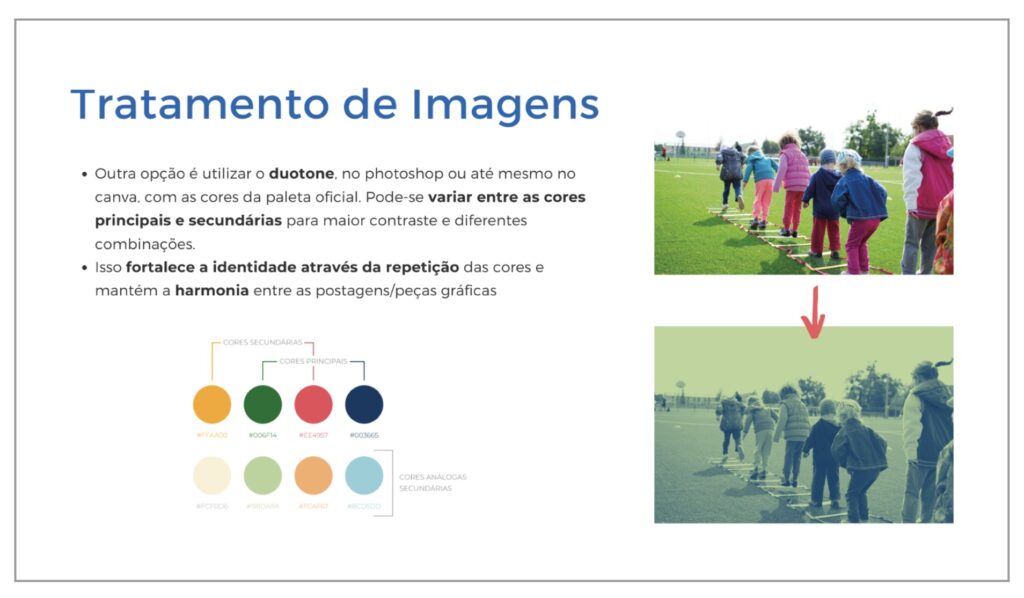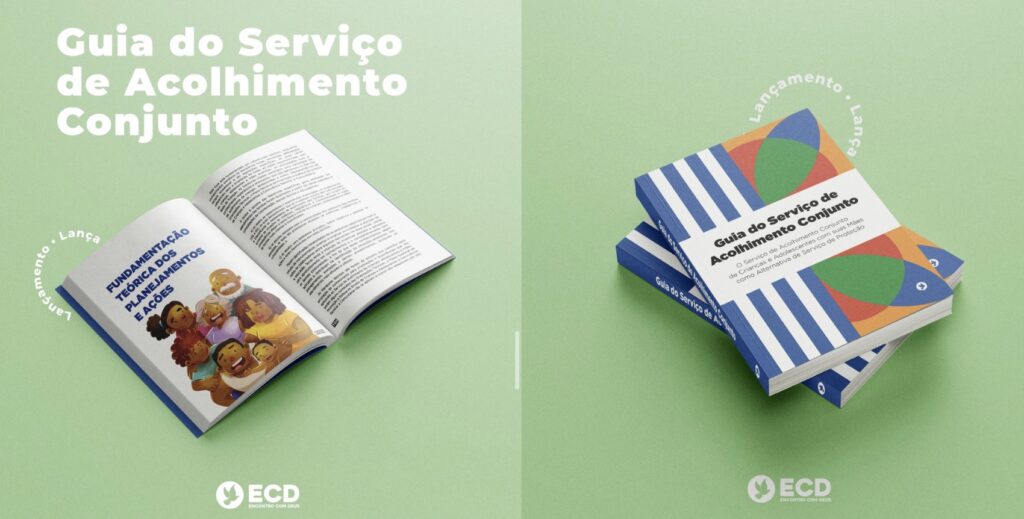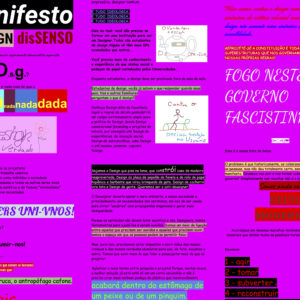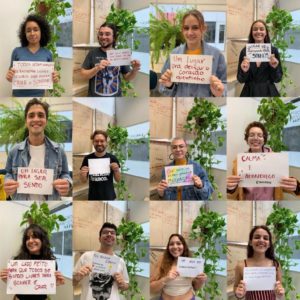Camila Kutiski heard from a friend about a shelter service for victims of domestic violence in her neighborhood. She visited the non-profit running the service and decided to support the people involved with her Graphic Design final work at UTFPR. The first thing she did was to understand the existing design activities in the non-profit. Who designed what?
She quickly learned that, although trained graphic designers were absent, the non-profit produced many graphic design products: social media imagery, pamphlets, books, and a newspaper. These products needed a coherent identity and looked amateurish, at least from her standpoint. The organization did not have enough resources to hire expert designers, so they had to rely on amateur volunteers who took the initiative to design what was needed.
The obvious idea came up: she could take over these activities for her final work. Instead of accepting the non-profit request, Camila preferred to do something else. She reflected on her limitation to keep serving the non-profit after she finished her graduation requirements. Instead of designing the products needed, she would support the people designing these products with her graphic design expertise.
She then collaborated with the amateur diffuse designers in the organization and developed a visual identity guide to consolidate the most effective communication practices. The guide had simple rules and suggestions for implementing them using the popular design tool Canva, used by the diffuse designers.

After assisting with the identity guide implementation and overseeing some design works, she left the non-profit to theorize what she was doing. She came up with an addition to the concept of diffuse design found in the design for social innovation literature. Instead of remaining diffuse, she hypothesized that the diffuse design practice in that organization would become more concentrated after using the guide for a while. She developed the concept of historical milestones to generalize this possibility of diffuse designers coming up with something less diffuse either independently or with expert assistance.

After formulating this hypothesis, she returned to the organization and gathered evidence. She interviewed the diffuse designers and checked their outputs. They gradually incorporated the graphic design rules into their work and reached a better visual consistency level. They were happy with the developments and mentioned that the guide reduced their design time since they did not need to be that creative whenever they needed to post an announcement on Instagram. The non-profit’s feed displays a gradual increase in design ability.

Camila was particularly impressed that once the diffuse designers understood the value of having a visual guide, they decided to design a service guide in a book format. This guide supported her hypothesis that the organization developed new design capabilities based on the capabilities they already had developed before.


After collecting the evidence, she came back to her methodological model and developed it further to generalize the approach. She named it conscious design after incorporating the critical pedagogy of Paulo Freire in her theoretical framework. Camila learned with this project that designers can act as popular educators who assist a community in becoming more autonomous in their continuous fight against oppression. Camila’s work laid the ground for other design students working at LADO.

